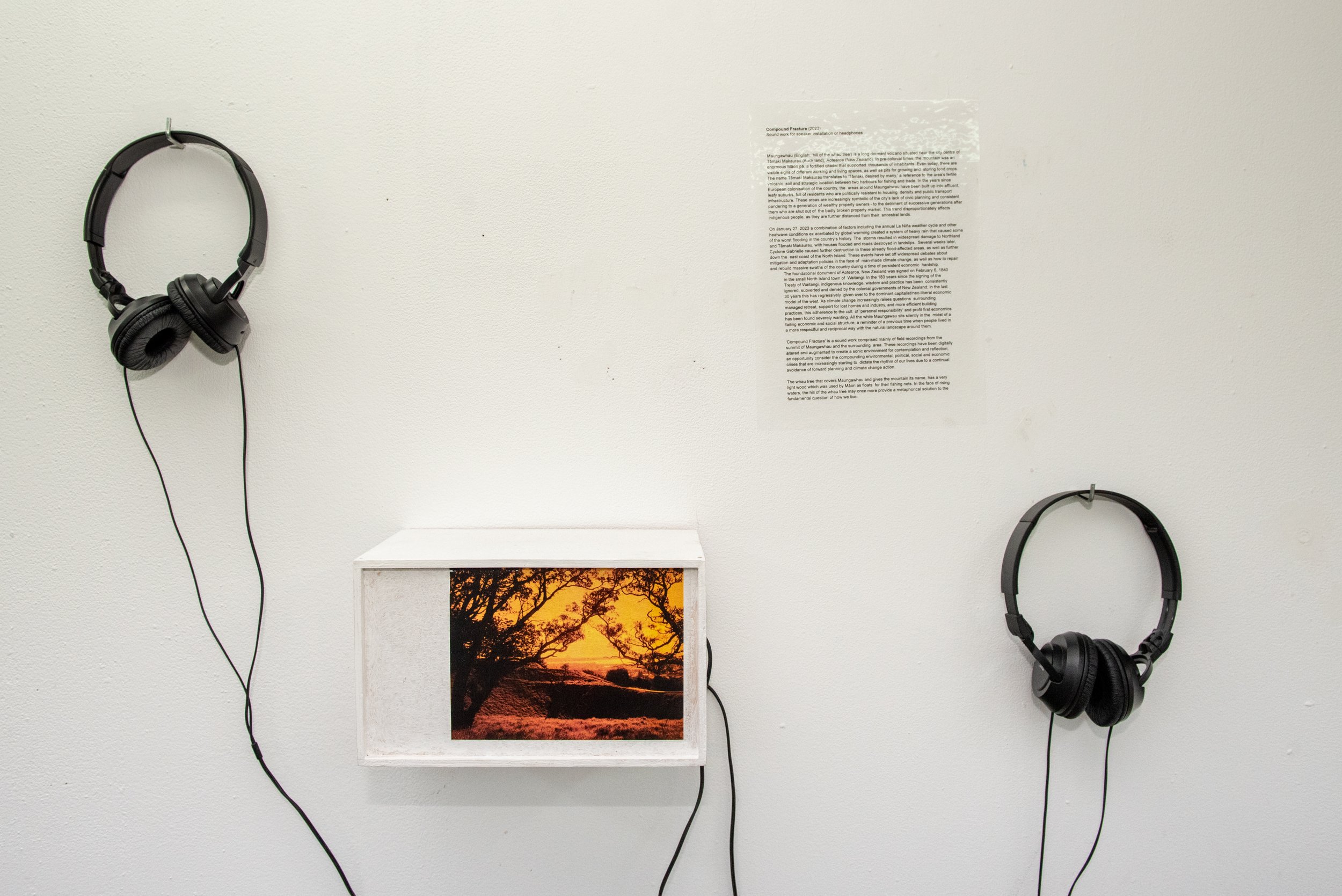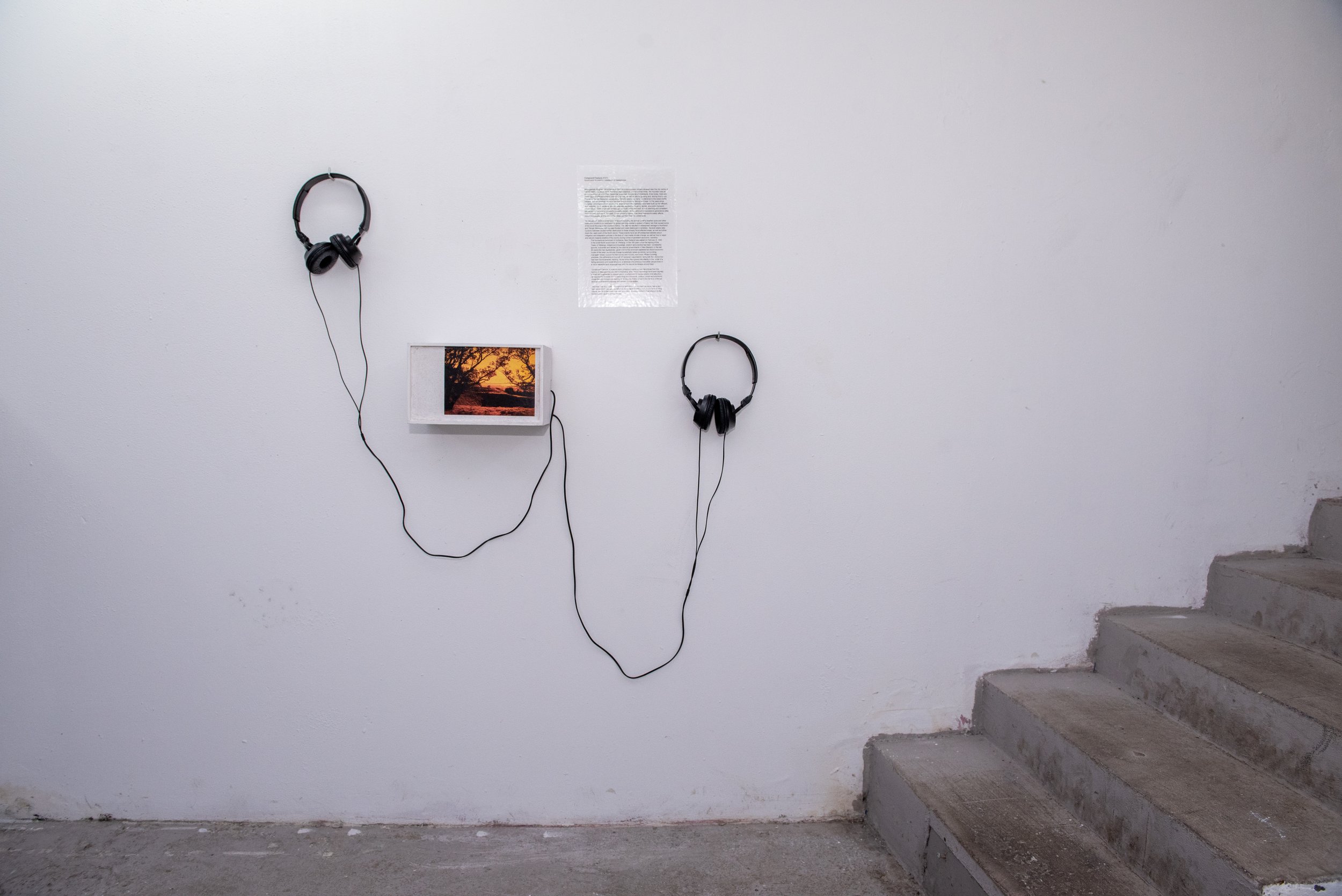
Compound Fracture (2023)
Sound work for speaker installation or headphones
Variable length (loop)
‘Compound Fracture’ is a sound work comprised mainly of field recordings from the summit of Maungawhau and the surrounding area. These recordings have been digitally altered and augmented to create a sonic environment for contemplation and reflection; an opportunity to consider the compounding environmental, political, social and economic crises that are increasingly starting to dictate the rhythm of our lives due to a continual avoidance of forward planning and climate change action.
Context
Maungawhau (English: ‘hill of the whau tree’) is a long dormant volcano situated near the city centre of Tāmaki Makaurau (Auckland), Aotearoa (New Zealand). In pre-colonial times, the mountain was an enormous Māori pā, a fortified citadel that supported thousands of inhabitants. Even today, there are visible signs of different working and living spaces, as well as pits for growing and storing food crops. The name Tāmaki Makaurau translates to ‘Tāmaki, desired by many,’ a reference to the area’s fertile volcanic soil and strategic location between two harbours for fishing and trade. In the years since European colonisation of the country, the areas around Maungahwau have been built up into affluent, leafy suburbs, full of residents who are politically resistant to housing density and public transport infrastructure. These areas are increasingly symbolic of the city’s lack of civic planning and consistent
pandering to a generation of wealthy property owners - to the detriment of successive generations after them who are shut out of the badly broken property market. This trend disproportionately affects indigenous people, as they are further distanced from their ancestral lands.
On January 27, 2023 a combination of factors including the annual La Niña weather cycle and other heatwave conditions exacerbated by global warming created a system of heavy rain that caused some of the worst flooding in the country’s history. The storms resulted in widespread damage to Northland and Tāmaki Makaurau, with houses flooded and roads destroyed in landslips.
Several weeks later, Cyclone Gabrielle caused further destruction to these already flood-affected areas, as well as further down the east coast of the North Island. These events have set off widespread debates about mitigation and adaptation policies in the face of man-made climate change, as well as how to repair and rebuild massive swaths of the country during a time of persistent economic hardship.
The foundational document of Aotearoa, New Zealand was signed on February 6, 1840 in the small North Island town of Waitangi. In the 183 years since the signing of the Treaty of Waitangi, indigenous knowledge, wisdom and practice has been consistently ignored, subverted and denied by the colonial governments of New Zealand; in the last 30 years this has regressively given over to the dominant capitalist/neo-liberal economic model of the west. As climate change increasingly raises questions surrounding managed retreat, support for lost homes and industry, and more efficient building practices, this adherence to the cult of ‘personal responsibility’ and profit first economics has been found severely wanting. All the while Maungawau sits silently in the
midst of a failing economic and social structure, a reminder of a previous time when people lived in a more respectful and reciprocal way with the natural landscape around them.




